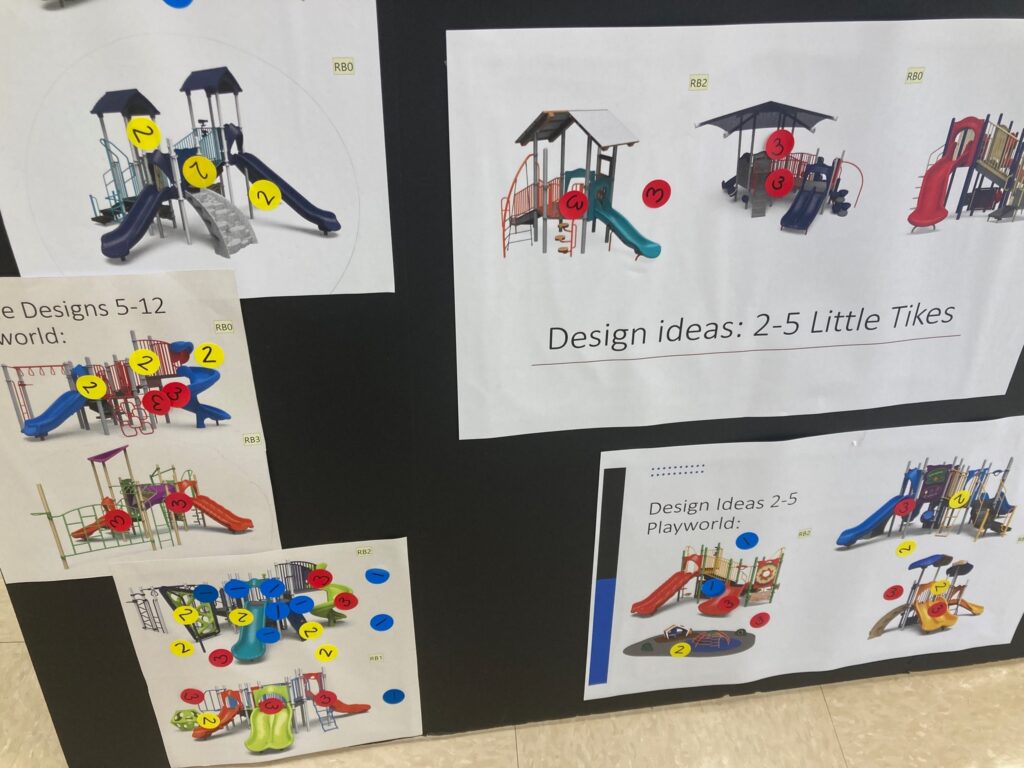
“So there’s two regular swings and a baby swing and regular swing and an adaptive swing and regular swing,” I spoke into my phone while trying to maneuver the camera on it so my kids could see the bulletin board in front of me over FaceTime.
They were staying at my parents’ house (thanks mom and dad!) and I was at our neighborhood community center. The bulletin board was covered with photos of options for a future playground at the park across the street from our house. The community center had invited the kids in the neighborhood and after school program to do ranked voting for their favorites. That day was the last day to vote.
Unlike voting in a fake election for president or a pretend class pet, this vote will have real impact. All of these kids were collectively making a decision about something that will affect them regularly for years to come. Unlike decisions about clothes they will wear or what they’ll eat for lunch, this vote will also affect many others in their community. My kids have seen my husband and I vote as well as watched me participate in meetings for our local bike advisory committee. But for the government to ask them specifically to participate in civic decisions? Revolutionary.
These sorts of activities are so important if we want our kids to grow up to be engaged, responsible citizens. A lot has been made of the fact that community organizations that were popular until the 1970s no longer exist, from bowling clubs to neighborhood groups. There’s been a lot of worried hand-wringing about how teenagers socialize so much less in person than they once did.
But the fact is that these organizations aren’t dead so much as that we can’t take them for granted. If we want to be part of community, we have to be willing to build and support that community. We are the village – the village is us. And it’s our kids too!
Some parts of community building are fuzzy and informal, like saying hi to neighbors and using local parks and libraries. Others are more formal, like participating in advisory committees, showing up to local stream cleanups, and helping organize school events. Both are necessary.
We have to both model our participation in these activities for our kids and find ways to they can actively participate too. This opportunity was a rare occurrence – they only replace the playground every 20 years – but these opportunities can be regular if we as adults choose to make them so. We can provide real choices for our kids that affect their lives in our homes, in our schools, and in our communities. How else can they practice that critical thinking and decision-making if we never give them a chance?
So how are you and your community empowering kids to make decisions that impact their lives? How can we do more of it?